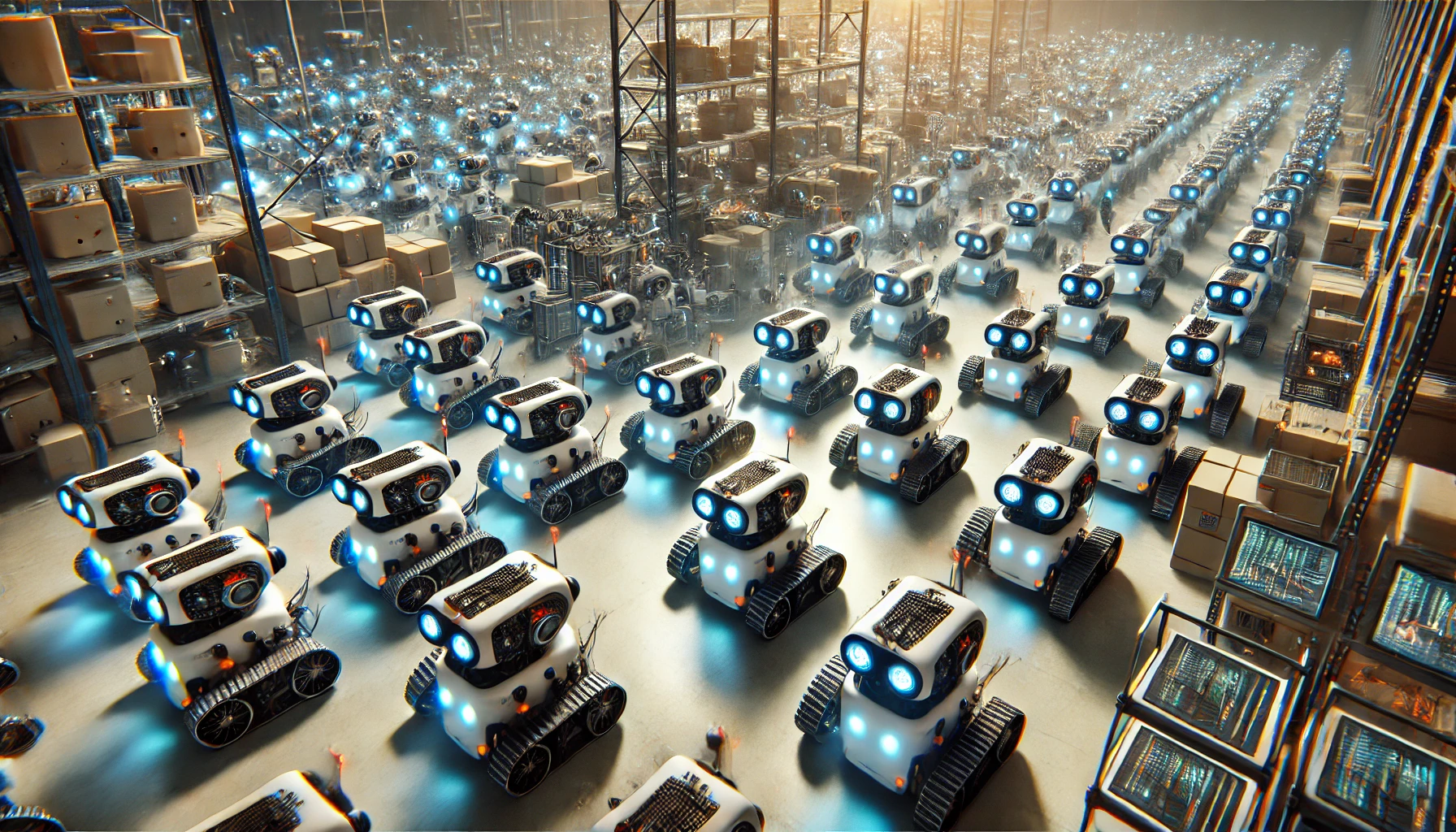BioTrack: Swarm Robotics: The Future of Collective Intelligence

Introduction
Swarm robotics is not just a buzzword; it’s an exciting field that holds the promise of revolutionizing how we approach complex problems. Think about how a flock of birds navigates through the sky: each bird follows simple rules, yet together they form intricate patterns and make coordinated decisions. This natural phenomenon inspires swarm robotics, where groups of robots work collaboratively to solve challenges across various domains, including logistics and search-and-rescue operations. As industries increasingly turn to technology for solutions, understanding the significance of swarm intelligence becomes imperative. In this article, we will explore the current state of swarm robotics, its historical roots, the challenges it faces, and what the future might hold for this fascinating technology.
Historical Context
The idea of swarm intelligence dates back to the early studies of natural systems where groups of organisms, such as ants and bees, exhibit collective behavior. Researchers began to formalize these ideas in the 1980s, with foundational studies examining how simple agents could interact to create complex behaviors. The field gained momentum in the 1990s with the development of algorithms such as Particle Swarm Optimization (PSO), which mimicked the social behavior of birds. Fast forward to the 2000s, and the advent of more sophisticated sensors, communication technologies, and artificial intelligence has allowed for the creation of physical swarm robots. These innovations opened doors to applications in real-world scenarios, from environmental monitoring to disaster relief efforts. As we look back, it’s clear that swarm robotics has evolved significantly, paving the way for today’s exciting advancements.
Current Challenges
While swarm robotics offers remarkable potential, it is not without its challenges. One of the primary hurdles is ensuring reliable communication among robots, especially in dynamic environments. Picture a chaotic warehouse filled with robots zipping around; if they can’t communicate effectively, things could quickly spiral out of control—like a poorly choreographed dance routine. Additionally, programming robots to make autonomous decisions while ensuring safety and accountability remains a contentious issue. Ethical dilemmas arise when robots must choose between competing priorities, such as minimizing property damage versus ensuring human safety. Moreover, physical challenges, such as navigating unpredictable terrains and environmental conditions, further complicate the deployment of swarm robotics. Addressing these obstacles requires innovative solutions and interdisciplinary collaboration.
Case Studies
To illustrate the challenges and opportunities within swarm robotics, let’s examine some real-world case studies. One notable example is the use of drone swarms in search-and-rescue missions. Imagine a natural disaster where first responders are overwhelmed; a coordinated swarm of drones can swiftly cover vast areas, pinpointing locations of survivors through thermal imaging and advanced sensors. This technology significantly reduces response times, ultimately saving lives. In logistics, companies like Amazon and Alibaba are exploring autonomous robots that work together to optimize warehouse operations. These robots communicate and collaborate to ensure that items are picked, packed, and shipped efficiently. They navigate complex layouts and adapt to changing conditions, showcasing the versatility and effectiveness of swarm robotics in action.
Solutions and Best Practices
To tackle the challenges facing swarm robotics, researchers and practitioners are developing innovative solutions and best practices. One effective approach is to implement robust communication protocols, enabling robots to exchange information seamlessly. By using techniques like decentralized control, robots can make collective decisions without relying on a central authority. Another crucial aspect is enhancing robot autonomy through advanced algorithms and machine learning, allowing them to adapt to new environments and unforeseen challenges. Additionally, collaboration between academia, industry, and policymakers is vital in establishing ethical frameworks and best practices for deploying swarm robotics responsibly. This multi-faceted approach will help ensure that swarm robotics can thrive and be utilized effectively across various sectors.
Future Implications
The future of swarm robotics is ripe with possibilities, as emerging trends suggest its integration into everyday life. For instance, in agriculture, swarms of drones could revolutionize crop monitoring and pest control, working together to analyze data and deliver targeted treatments. In urban environments, autonomous robots might collaborate to manage traffic flow, reduce congestion, and improve public transportation systems. However, as we embrace these advancements, we must also consider their societal implications. Issues of job displacement, privacy, and security will inevitably arise, prompting discussions about how to navigate this brave new world. The balance between harnessing the potential of swarm robotics and addressing ethical considerations will shape the landscape of this technology in the years to come.
Conclusion
In conclusion, swarm robotics represents a significant leap forward in harnessing collective intelligence to tackle complex challenges. From its historical roots in studying natural systems to its current applications in logistics and disaster response, the evolution of swarm robotics is nothing short of remarkable. By understanding its challenges and future implications, we can better appreciate the transformative power of this technology. As we continue to explore the possibilities of swarm robotics, it is crucial to engage in discussions around its ethical use and societal impacts to ensure a responsible and beneficial integration into our lives.
Call to Action
What are your thoughts on the future of swarm robotics and its potential applications? How do you envision it impacting your life in the coming years? Join the conversation on Reddit or Twitter and share your insights!



